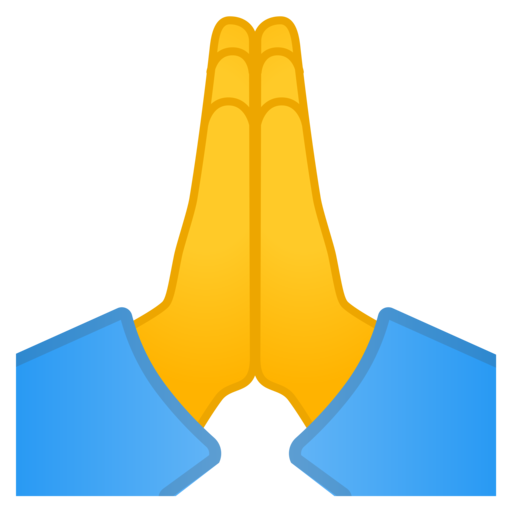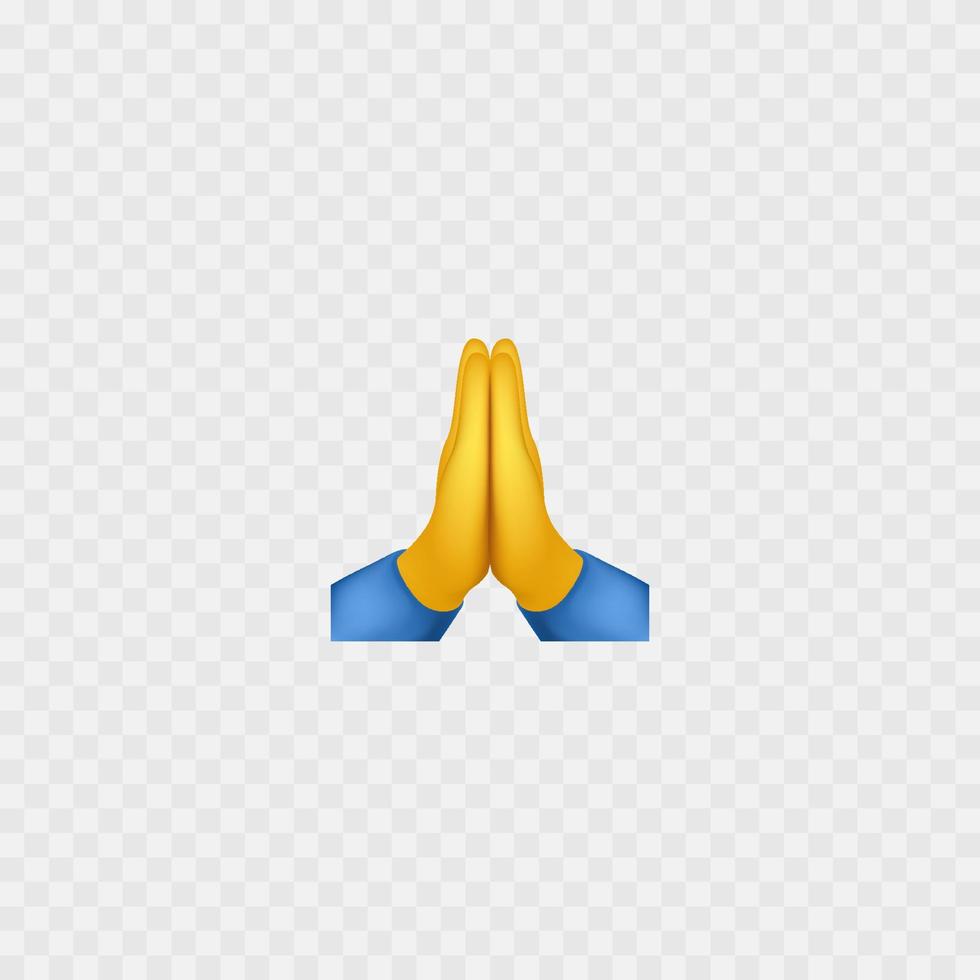What Does the Praying Hands Emoji Mean?
The praying hands emoji (🙏) is one of the most frequently used symbols in digital communication, yet its meaning often varies depending on context, culture, and personal interpretation. Is it a gesture of prayer, gratitude, or a simple request? Why do some people use it to say “thank you,” while others associate it with deep religious devotion?
At FEC Vietnam, we are dedicated to decoding the true meanings of emojis, ensuring that you can use them correctly in your digital conversations. In this article, we dive deep into the origins, significance, and proper usage of the praying hands emoji, helping you understand its full range of meanings.
Cultural and Religious Significance
The praying hands emoji has strong ties to various cultures and religious traditions. It is widely used across Christianity, Buddhism, Hinduism, and even Japanese customs—each interpreting it in their own unique way.
Christianity: A Symbol of Prayer and Devotion
In Christian traditions, the gesture of folded hands has long been a sign of reverence and prayer. It represents submission to God, humility, and faith. The emoji is often used in messages expressing:
- Prayers for healing (“Praying for you and your family 🙏”)
- Hope and faith (“Keep believing, God has a plan 🙏”)
- Seeking divine guidance (“May the Lord bless you 🙏”)
Historical records trace the folded hands gesture back to medieval times when Christian monks and worshippers clasped their hands together during prayer. This act was meant to show devotion, supplication, and trust in God’s will.
Hinduism & Buddhism: The Anjali Mudra Gesture
In Hinduism and Buddhism, the same hand gesture is known as Anjali Mudra, a sacred position used in prayer, meditation, and greeting others with respect. It is often accompanied by the word “Namaste”, meaning:
“I bow to the divine in you.”
This gesture is commonly seen in yoga, temple prayers, and traditional greetings across India, Nepal, and Southeast Asia. When people use the 🙏 emoji in these cultures, it often conveys:
- Respect and reverence (“Namaste, have a blessed day 🙏”)
- Meditative peace (“Sending you positive energy 🙏”)
- Spiritual gratitude (“Thank you for your wisdom 🙏”)
Japanese Culture: A Gesture of Apology or Gratitude
Unlike in Western religious contexts, Japan uses the folded hands emoji differently. Here, it is closely tied to:
- Saying “please” or “thank you” (“Thank you for your help today 🙏”)
- Begging for forgiveness (“Sorry for the mistake, I truly apologize 🙏”)
- Humbly requesting a favor (“Can you help me with this? 🙏”)
This interpretation stems from the Japanese bowing tradition, where people press their hands together when expressing gratitude or seeking forgiveness.
Different Interpretations Across Regions
| Region | Primary Meaning of 🙏 |
|---|---|
| United States & Europe | Prayer, religious faith, gratitude |
| India & Southeast Asia | Namaste, respect, meditation |
| Japan | Thank you, please, apology |
| Latin America | Hope, divine intervention, blessings |
Understanding these cultural differences ensures that you use the praying hands emoji correctly, avoiding any unintended confusion.
How to Use the Praying Hands Emoji in Digital Communication
The 🙏 emoji is widely used in text messages, social media captions, and professional conversations. But how do you ensure you’re using it appropriately?
Expressing Gratitude and Appreciation
One of the most common uses of the praying hands emoji is to show thankfulness. People often use it in everyday messages to express appreciation:
- “Thank you so much for your support! 🙏”
- “Grateful for everything you’ve done 🙏”
- “I appreciate your kindness, truly 🙏”
This aligns with both Western and Asian cultural interpretations, where the gesture signifies gratitude and respect.
Using the Emoji in Religious and Spiritual Contexts
For those of faith, the 🙏 emoji is a powerful digital tool to express religious devotion. It appears in:
- Prayer requests (“Please keep my family in your prayers 🙏”)
- Blessings and wishes (“May God bless you with good health 🙏”)
- Hopeful messages (“Keep the faith, miracles happen 🙏”)
Whether in Christian, Hindu, Buddhist, or Islamic contexts, this emoji can serve as a universal spiritual symbol.
Misinterpretations and Common Mistakes
Despite its deep meaning, many people misuse the praying hands emoji—often confusing it with a high-five. While it may look like two hands coming together, the official Unicode description confirms it represents folded hands in prayer, not a celebratory gesture.
Some common mistakes include:
- Using 🙏 instead of a high-five emoji (🙌)
- Sending it in inappropriate contexts (“Let’s party tonight! 🙏”)
- Overusing it in professional emails (“Looking forward to our meeting 🙏”)
Being mindful of when and how you use the emoji ensures clarity and respect in your digital conversations.
Coming Up Next…
So far, we’ve explored the deep cultural, religious, and practical uses of the praying hands emoji. But there’s more to uncover! In the second half of this article, we will delve into:
- How social media influencers and brands use the 🙏 emoji
- The emoji’s role in pop culture and marketing
- Similar emojis and their differences
Stay tuned as we continue to decode one of the most widely used emojis in digital communication!
Praying Hands Emoji in Popular Culture & Social Media
The praying hands emoji is more than just a symbol of faith or gratitude; it has become a major cultural and digital phenomenon. From social media platforms to marketing campaigns, this emoji has found its way into various aspects of pop culture.
Usage Trends on Social Media Platforms
Social media has transformed how people use and interpret emojis. On platforms like Twitter, Instagram, TikTok, and Facebook, the 🙏 emoji is used in different ways depending on the context:
- Instagram & Facebook: Influencers, celebrities, and brands use it to express gratitude to their followers.
- Twitter: It often appears in tweets seeking support, offering prayers, or reacting to inspirational content.
- TikTok & YouTube Comments: Frequently seen in the comments of motivational videos, religious content, and heartwarming stories.
Viral Moments: When the 🙏 Emoji Took Over the Internet
In 2020, when basketball legend Kobe Bryant tragically passed away, millions of people used 🙏 in their tributes across social media. It became a symbol of respect, mourning, and remembrance.
During the COVID-19 pandemic, the emoji was widely used in messages thanking healthcare workers:
“Thank you to all the doctors and nurses working tirelessly 🙏”
This shows how a simple digital symbol can unite people in moments of grief, appreciation, and collective emotions.
How Brands and Influencers Use the Emoji
Major brands have recognized the power of emojis in digital marketing. Companies and influencers often use the praying hands emoji to:
- Show appreciation for customer loyalty (“We’re grateful for 1M followers! Thank you! 🙏”)
- Encourage engagement in charity campaigns (“Every purchase helps donate meals to families in need 🙏”)
- Promote motivational and inspirational messages (“Believe in yourself and never give up! 🙏”)
Marketing studies show that emoji use in social media posts increases engagement rates by 48%. The praying hands emoji, in particular, resonates well because it conveys emotions universally recognized across cultures.
Similar and Related Emojis: Avoiding Confusion
Although the praying hands emoji is widely recognized, it is often misinterpreted or confused with other similar-looking emojis. Understanding the differences ensures accurate and intentional communication.
🙌 Raising Hands vs. 🙏 Praying Hands
| Emoji | Meaning | Use Case |
|---|---|---|
| 🙏 Praying Hands | Prayer, gratitude, respect | “Thank you for your support 🙏” |
| 🙌 Raising Hands | Celebration, excitement, praise | “We did it! 🎉🙌” |
A common mistake is using 🙌 when you mean 🙏. If you want to express faith or thankfulness, go with the praying hands emoji, not the raising hands emoji.
🤲 Open Hands vs. 🙏 Praying Hands
| Emoji | Meaning | Use Case |
|---|---|---|
| 🙏 Praying Hands | Prayer, gratitude, asking for help | “Please keep my family in your prayers 🙏” |
| 🤲 Open Hands | Giving, receiving, generosity | “I offer my help to those in need 🤲” |
The open hands emoji is more about offering or receiving, while the praying hands emoji conveys devotion, humility, or thankfulness.
Understanding these subtle differences ensures that your digital communication remains precise, respectful, and appropriate.
Conclusion: When & How to Use the Praying Hands Emoji Effectively
The praying hands emoji is more than just a small digital symbol—it carries deep cultural, religious, and emotional significance. Its widespread use in daily conversations, social media, and marketing highlights how powerful emojis have become in shaping digital communication.
At FEC Vietnam, we believe that understanding emojis correctly is essential to meaningful digital interactions. Whether you use 🙏 to express gratitude, show respect, or offer a prayer, ensuring its correct usage enhances clarity and emotional depth in conversations.
Key Takeaways on Using the 🙏 Emoji Properly:
✔ Use it for gratitude and appreciation (“Thank you for everything! 🙏”)
✔ Be mindful of religious and cultural meanings (“Sending you prayers and blessings 🙏”)
✔ Avoid misusing it as a high-five (Wrong: “Congrats on your new job! 🙏”)
✔ Recognize the emoji’s role in global trends (“In loving memory of a legend 🙏”)
With emojis evolving alongside digital culture, their meanings continue to shift and expand. Staying updated with accurate interpretations ensures that your messages are both meaningful and respectful.
At fecvietnam.edu.vn, we provide in-depth insights on emoji meanings, global trends, and proper digital communication etiquette. Our mission is to help you navigate the ever-changing emoji language so that you can express yourself with clarity and confidence.
So next time you use the 🙏 emoji, remember—it’s more than just a symbol. It’s a reflection of gratitude, faith, and human connection in the digital world.




